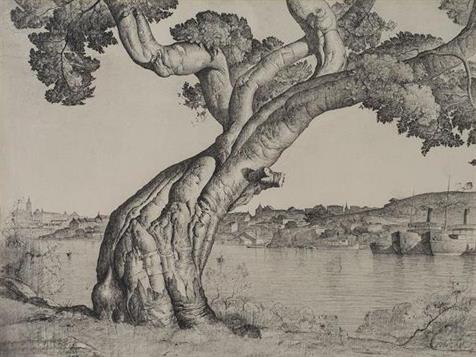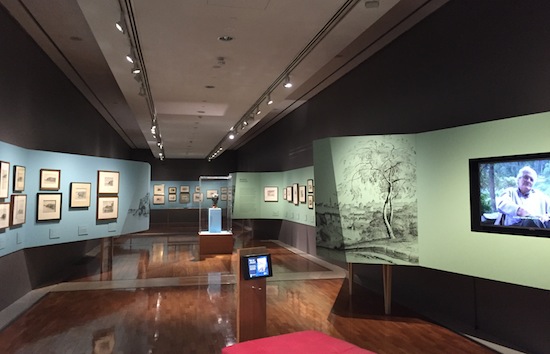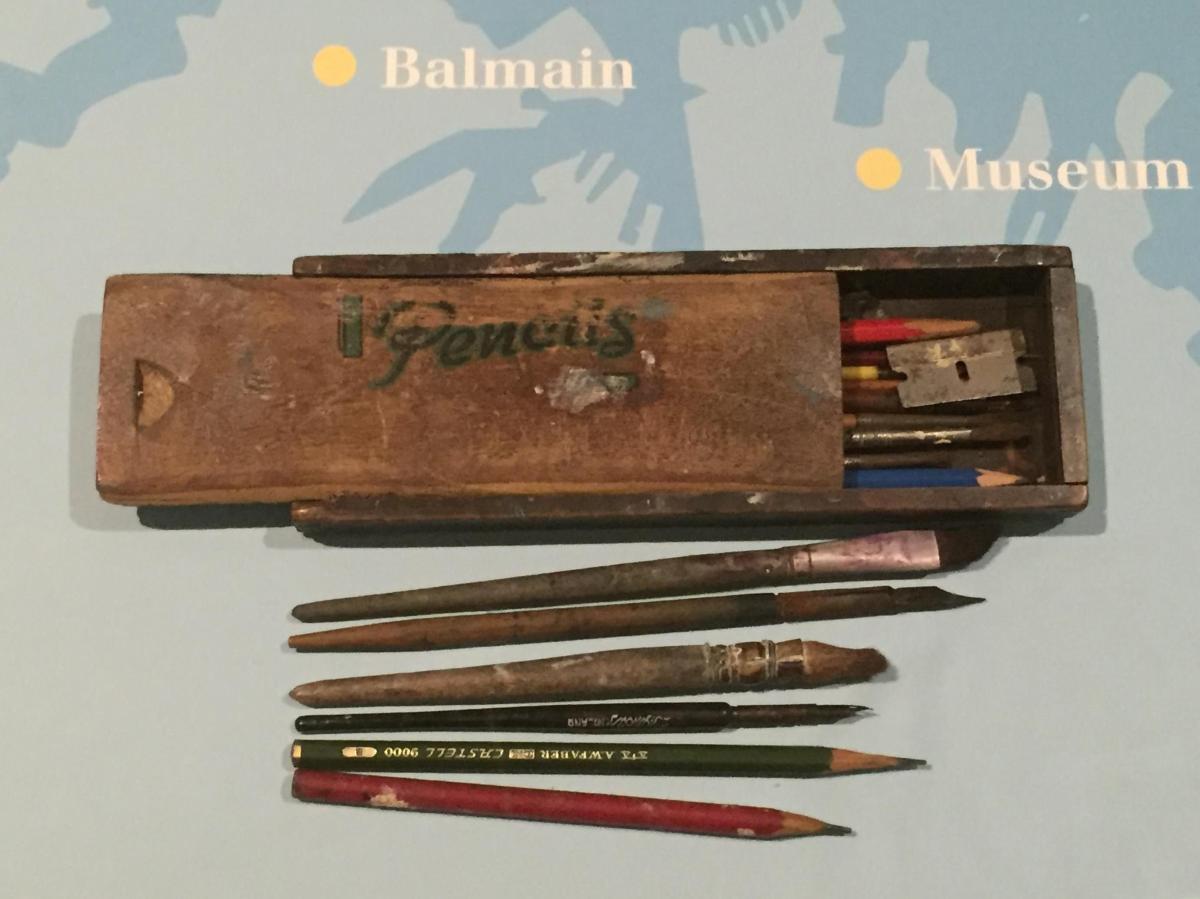Lloyd Rees’ pencils courtesy of Alan and Jancis Rees are a wonderful addition to this exhibition.
Once you move past the ‘OMG moment’, this exhibition starts to open up, ushering the viewer to new understanding of the legendary Australian artist Lloyd Rees.
Comprising of 90 drawings and works on paper, it focuses on the lesser-known period of his career – intricate views of Sydney Harbour made between 1930 and 1936.
While many of us have seen Rees’ drawings before in survey exhibitions and state galleries, this is the first time that they have been pulled together in conversation in any depth. It is a rare moment.
The dates too are key.
Sitting in the interwar period, it was a period when Sydney was blossoming into its modernisation – the Sydney Harbour Bridge opened in 1932 and the first traffic lights were installed in 1933 – and yet Rees rather captured an alternate view to that bustle.
It was a sensitive side of the city somewhat sidelined in images of that time – art history leans toward images such as Grace Cossington Smith’s The Bridge in Curve (1930) and the works of the Sydney Moderns instead.
The greater impact of this exhibition rather is a personal one. Rees had made these drawings after a period of severe depression and in the wake of the death of his first wife and child. Working in en plein air, there was a solace in that familiarity and permanence that the landscape offered.
Rees returned with near obsession to these places – the viewer building a connection through the exhibition’s repetition; there are 15 drawings alone of Balls Hill in the show.

Lloyd Rees, Balls Head 1936; courtesy artist’s estate and Museum of Sydney
During the Great Depression in the late 1920s and 30s the headland was stripped bare for firewood. Rees captured the headland with a ‘heroic’ quality, it is described in the exhibition, just as he found the silhouette of a tree or the lean of a verandah a sensitive subject.
It is the kind of repetition that is like the intimacy of a lover – the knowing curve of a limb, the observed rise of a rocky crag, the elegance of a fig tree’s embrace.
‘I liked embracing them to me. The fig tree was like a favourite model,’ reminisced Rees in 1972. It was one of many quotes that were used as didactics across the exhibition, adding to its personal tone.

Lloyd Rees, Port Jackson fig tree 1934.
Appropriately, this exhibition – which at its heart is a love for this city and its history – was presented at the Museum of Sydney, an institution whose very premise lies in the preserving of that past.
It has done Rees’ legacy justice; the exhibition is superbly designed without being overwhelming decorative – a recipe that so many museums get wrong.
The gallery walls themselves roll like a landscape; one side painted blue for the harbour the other green. It extends the conversation of the drawings.

Installation view of Lloyd Rees exhibition at the Museum of Sydney
Simply, this is an exhibition that forces you to slow down. The immense detail at Rees’ hand is mind-boggling. In our digital age of perfection it is reminder of the celebration of traditional skill.
It is a curious conundrum to consider Rees was near blind when he passed away in 1988 aged 93; his failing eyesight had been with him many years and a source of his continuing depression. In his last interview he described to Janet Hawley, ‘At best, it is like looking through silk, at worst like peering through thick Vaseline.’
It is hard to believe looking at these drawings from the 1930s with their precision of texture and control of light, and near photo perfection, were created using a very sharp pencil on a very fine paper.
Rees admitted in 1985: ‘The drawings were by no means naturalistic for there were things brought in and things left out …I drew in the morning and then took the work home and looked at it in the afternoon and if I saw anything superfluous I rubbed it out.’
It is this simple honesty that sits core to this exhibition.
While the city is scheduled with blockbusters and festival activities – so much noise – it is this quiet little drawing show that is the real gem this month.
You have to remember, Lloyd Rees twice won the Wynne Prize for landscape (1950, 1982), won the silver medal for drawing at the Paris International Exposition in 1937, and taught drawing at the University of Sydney for nearly forty years. After 1936, he moved away from pencil and began experimenting with oils, determined to master painting – and that, he did achieve.
This exhibition offers a salute to his achievements outside of that painting oeuvre which is more popularly championed.
Rating: 4 out of 5
Lloyd Rees: Painting with Pencil 1930-36
Curated by Veronica Kooyman
Museum of Sydney
Cnr Bridge and Phillip streets, Sydney
12 December – 10 April 2016
Free with general museum admission Adult $10, Concession/child (under 15) $5, Family $20
sydneylivingmuseums.com.au





